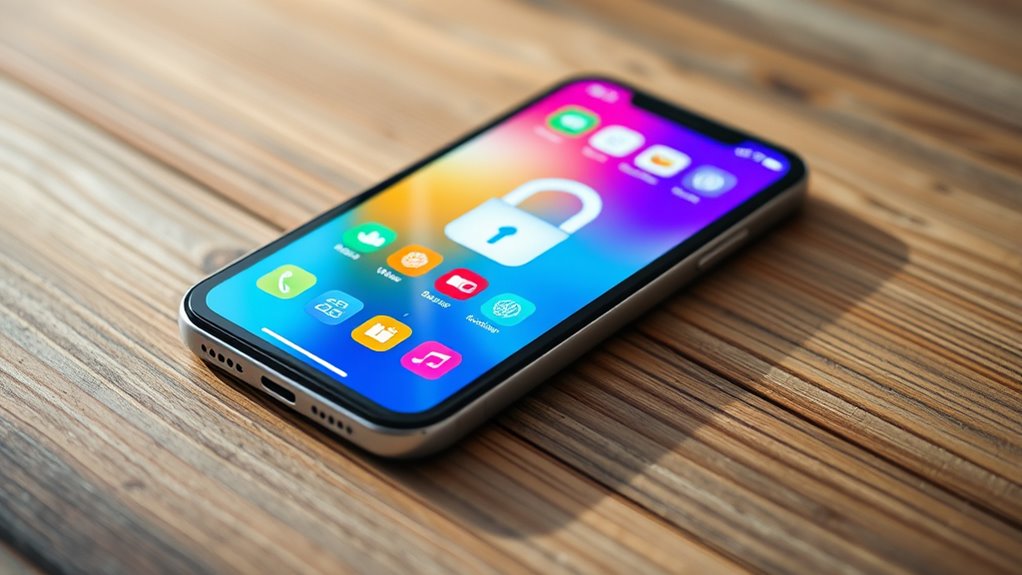To keep your digital wallet secure, use strong, unique passwords and enable two-factor authentication whenever possible. Regularly update your device’s software and avoid public Wi-Fi networks when accessing sensitive information. Monitor your transaction history frequently for suspicious activity, and back up your wallet data securely. Be cautious of phishing attempts and only choose reputable providers with robust security features. Staying vigilant about these practices helps protect your assets—there’s even more you can learn to stay safe.
Key Takeaways
- Use strong, unique passwords and enable Two-Factor Authentication for all digital wallet accounts.
- Regularly update device software, apps, and security patches to protect against vulnerabilities.
- Connect only to trusted, secure networks and avoid public Wi-Fi during sensitive transactions.
- Regularly review transaction history and immediately report any suspicious activity.
- Choose reputable wallet providers with robust security features like encryption and biometric login.
Use Strong, Unique Passwords for Your Digital Wallet
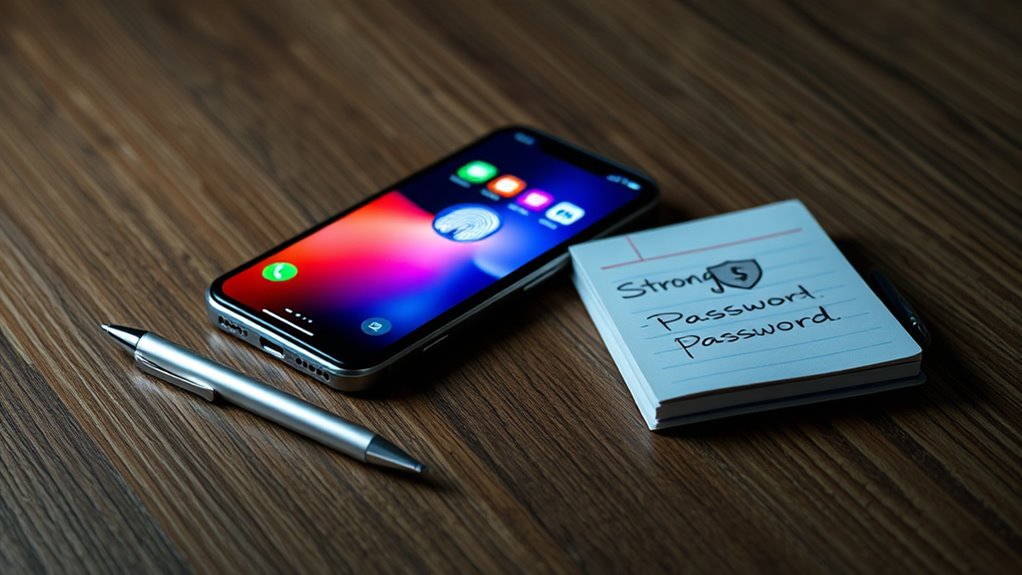
To protect your digital wallet from unauthorized access, you must use strong, unique passwords. Avoid common or easily guessable passwords like “password123” or “admin.” Instead, create a mix of uppercase and lowercase letters, numbers, and special characters. Consider using a passphrase—a sequence of random words that’s easy for you to remember but hard for others to guess. Never reuse passwords across different accounts; each wallet should have its own secure password. Using a reputable password manager helps generate and store complex passwords safely, so you don’t have to memorize them all. Regularly updating your passwords adds an extra layer of security. Implementing best practices for password security and cultivating a growth mindset towards security awareness makes it substantially harder for cybercriminals to gain unauthorized access to your digital assets. Additionally, paying attention to encryption methods can further safeguard your sensitive information. Staying informed about the latest cybersecurity threats can help you adapt your defenses accordingly.
Enable Two-Factor Authentication Whenever Possible
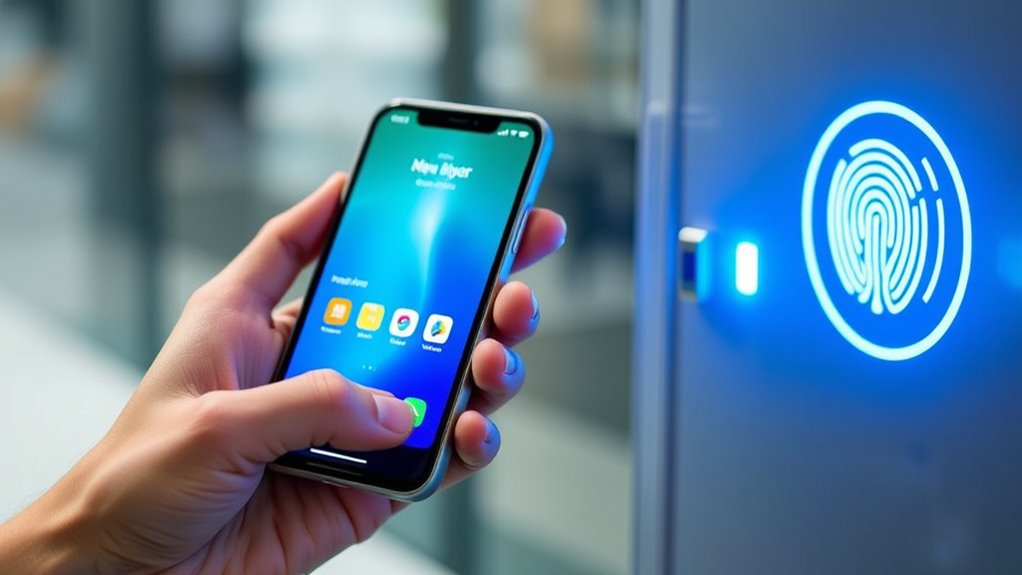
Enabling two-factor authentication (2FA) adds an essential layer of security to your digital wallet by requiring a second form of verification beyond just your password. This extra step makes it harder for hackers to access your account, even if they have your password. Typically, 2FA involves receiving a temporary code via SMS, email, or an authenticator app. When you log in, you’ll enter your password and then input the code sent to your device. Always activate 2FA whenever the option is available. Implementing security measures can significantly improve your account protection by reducing vulnerabilities to cyber threats. It considerably reduces the risk of unauthorized access and theft. Don’t skip this step, as it provides an added shield for your funds and personal information, making your digital wallet much more secure. Timing and Dates are important considerations when managing security protocols and verifying account activity. Additionally, security best practices recommend regularly updating your recovery options and monitoring your account for suspicious activity. Incorporating digital wallet security practices like strong passwords and device management further enhances your protection.
Keep Your Device’s Software and Apps Up to Date
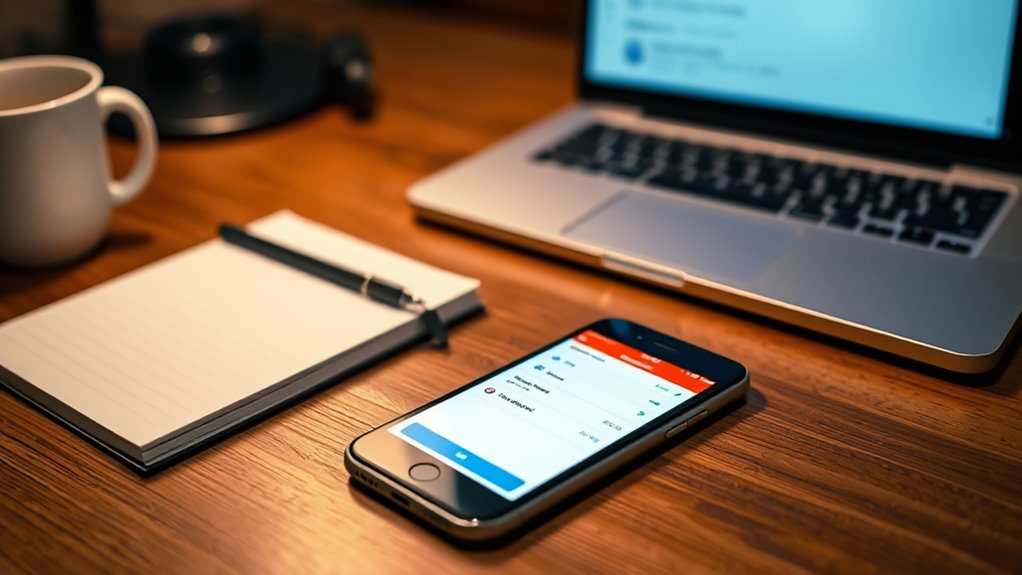
Keeping your device’s software and apps up to date is essential for security. Set a regular update schedule and enable automatic updates to make certain you don’t miss critical patches. Staying current helps protect your digital wallet from vulnerabilities. Additionally, being aware of emerging AI security risks can help you stay vigilant against new threats. Recognizing vetted products and their safety profiles can also inform you about potential security concerns related to device usage and compatibility. Regularly monitoring for software vulnerabilities is crucial, as attackers often exploit unpatched systems. Being informed about security advisories can further enhance your protection against the latest exploits.
Regular Update Schedule
Regularly updating your device’s software and apps is essential for maintaining security in your digital wallet. Updates often include patches for vulnerabilities that hackers might exploit, so delaying them leaves your device at risk. Set aside time each week to check for updates manually if automatic updates aren’t enabled. This habit ensures you stay protected against the latest threats. Pay special attention to updates for your operating system and banking or payment apps, as these are critical for safeguarding your financial information. Ignoring updates can also cause compatibility issues, leading to bugs or crashes that compromise your user experience. By establishing a regular update schedule, you reduce the chances of security breaches and keep your digital wallet functioning smoothly and securely. Additionally, staying informed about cybersecurity vulnerabilities helps you understand emerging risks and take proactive measures to protect your personal information. Practicing good security habits, such as using strong passwords and enabling two-factor authentication, further enhances your protection. Regular updates also help ensure that necessary cookie security measures are in place, preventing unauthorized access to your sensitive data. Being aware of the impact of outdated software can motivate you to keep your systems current and secure.
Enable Automatic Updates
Since manual updates can be overlooked or delayed, turning on automatic updates guarantees your device’s software and apps stay current without extra effort. Automatic updates ensure you receive the latest security patches, bug fixes, and performance improvements as soon as they’re available. This minimizes vulnerabilities that hackers could exploit, especially in financial apps and digital wallets. Enabling this feature also saves you time and reduces the risk of forgetting to update critical security features. To activate automatic updates, check your device’s settings—usually under software updates or app store preferences—and toggle the option on. Regularly updating your device helps protect your personal and financial information, keeping your digital wallet safe from emerging threats and ensuring smooth operation. Additionally, software update protocols play a crucial role in maintaining overall device security and stability. Implementing security best practices further enhances your protection by reducing potential entry points for cyberattacks. Staying informed about divorce laws and other legal considerations can also help you make better decisions regarding your digital privacy and security during major life changes. Transparency in affiliate relationships is also important when considering app permissions and data sharing.
Be Cautious With Public Wi-Fi Networks
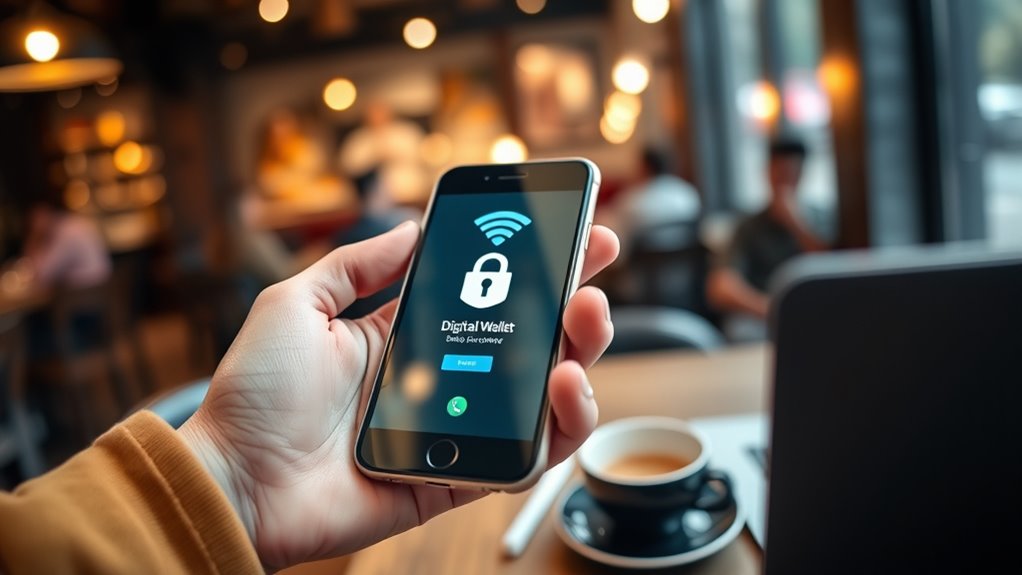
Have you ever connected to a public Wi-Fi network without thinking about the risks? Public Wi-Fi networks are often unsecure, making it easy for hackers to intercept your data. When you use these networks for your digital wallet, your sensitive information, like account details or payment info, could be compromised. Avoid accessing your digital wallet or conducting financial transactions over public Wi-Fi unless you’re using a trusted VPN. VPNs encrypt your internet connection, adding an extra layer of security. If possible, wait until you’re on a secure, private network to access your digital wallet. Remember, public Wi-Fi is convenient, but it can also be a gateway for cybercriminals to steal your personal information. Always prioritize your security before connecting to unfamiliar networks.
Regularly Monitor Your Transaction History
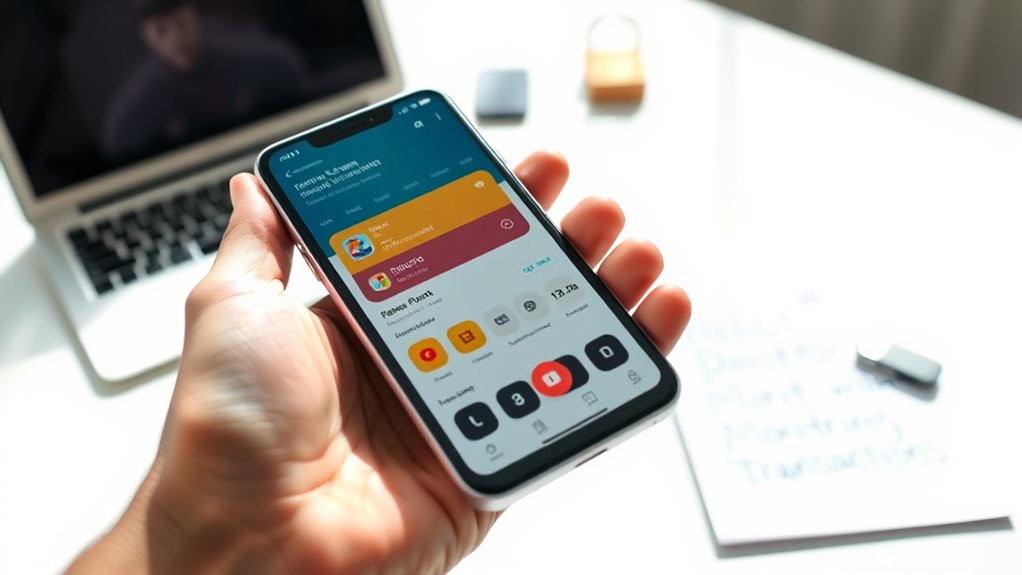
Keeping a close eye on your transaction history helps you catch unauthorized or suspicious activity early. Regularly reviewing your digital wallet’s activity allows you to spot unfamiliar charges quickly. Set aside a few minutes weekly or monthly to go through your transactions and verify each one. If you notice anything unusual—such as unfamiliar merchants, unexpected amounts, or duplicate charges—take immediate action. Contact your wallet provider to report suspicious activity and consider changing your security settings. Staying vigilant helps prevent potential fraud from escalating and minimizes financial loss. Remember, early detection is key to protecting your funds and personal information. Make monitoring a routine part of your digital wallet management to stay secure and in control.
Use Secure Networks and Avoid Sharing Sensitive Information

Using secure networks is essential when accessing your digital wallet, as public Wi-Fi or unsecured connections can expose your sensitive information to hackers. Always connect through trusted, password-protected networks to minimize the risk of interception. Avoid using free or open Wi-Fi networks for financial transactions, as these are prime targets for cybercriminals. When on a private network, ensure your Wi-Fi password is strong and updated regularly. Additionally, never share your wallet login details or sensitive data via email, messaging apps, or social media, as these channels are often insecure. Be cautious about entering personal information on unfamiliar or suspicious websites. By using secure networks and keeping your information private, you considerably reduce the chances of unauthorized access and financial theft.
Back Up Your Wallet Data Securely
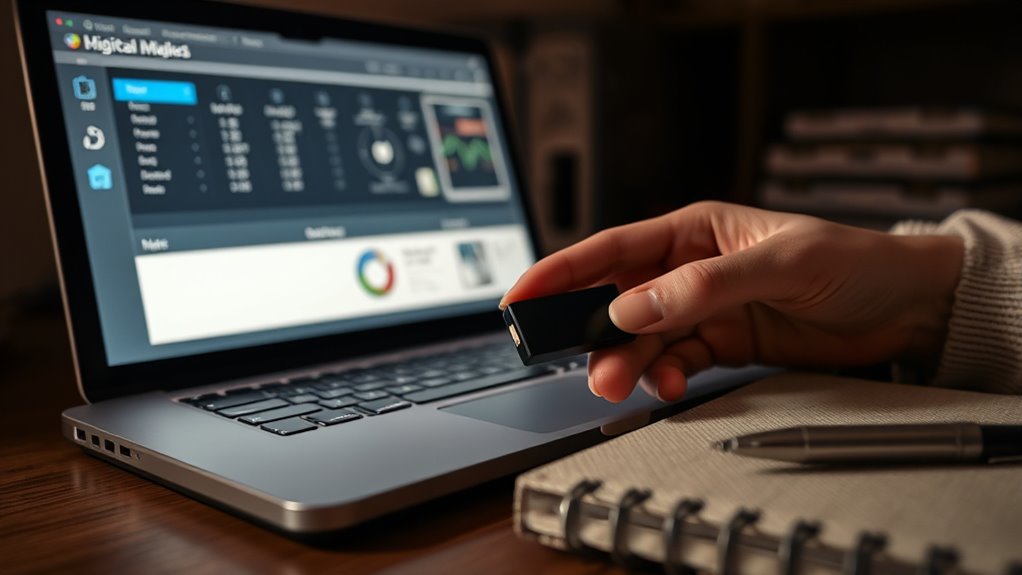
Since digital wallets hold valuable financial information, securing your wallet data through regular backups is essential. Make sure to back up your wallet data frequently, especially after significant transactions or updates. Use trusted, secure methods like encrypted external drives or reputable cloud services with strong encryption. Avoid saving backups on unsecured devices or public networks, as these expose your data to potential theft. Store backups in multiple locations to prevent loss from device failure or theft. Additionally, keep your backup files protected with strong, unique passwords and enable two-factor authentication where possible. Regular backups ensure you can restore your wallet quickly if your device is lost, damaged, or compromised. Staying diligent with secure backups helps safeguard your financial assets and maintains your peace of mind.
Recognize and Avoid Phishing Attempts
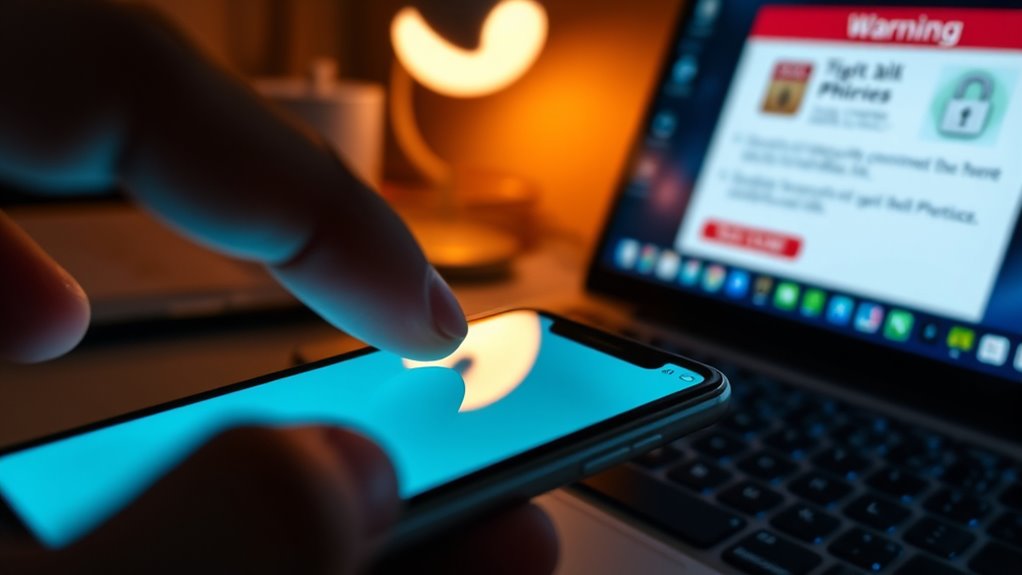
Even with secure backups in place, your digital wallet remains vulnerable to phishing scams that aim to steal your login credentials or trick you into revealing sensitive information. Phishing attacks often come through fake emails, messages, or websites that appear legitimate. To protect yourself:
- Always verify the sender’s email address and look for signs of impersonation.
- Avoid clicking on links or downloading attachments from unknown or suspicious sources.
- Use two-factor authentication to add an extra layer of security, even if your credentials are compromised.
Remaining cautious and attentive helps prevent falling victim to these scams. Recognizing the signs of phishing and practicing safe online habits keep your digital wallet and personal data secure.
Choose Reputable Digital Wallet Providers
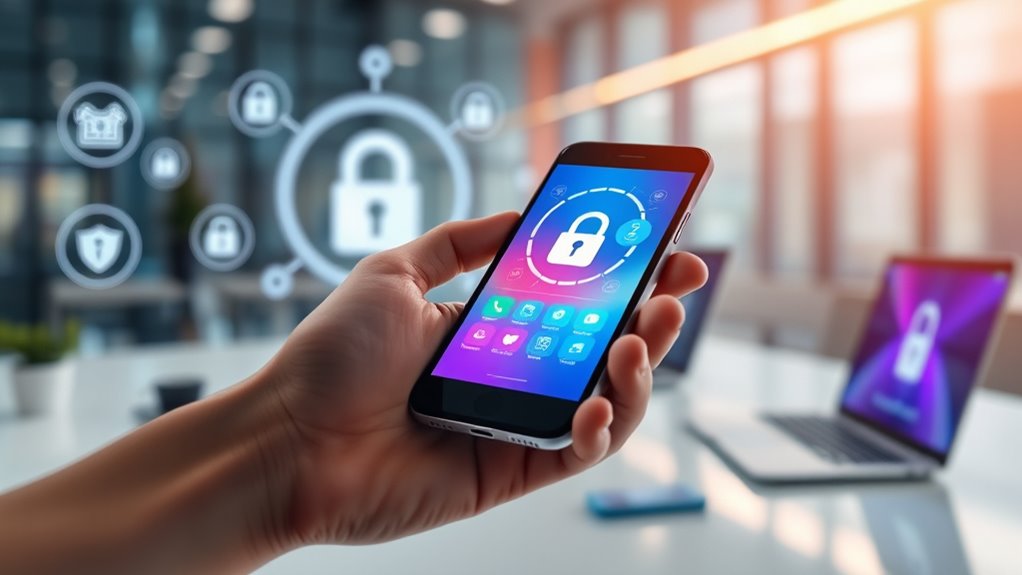
Choosing a reputable digital wallet provider is essential to guarantee the safety of your funds and personal information. You need to research providers carefully, considering their security features, user reviews, and industry reputation. Trustworthy providers use encryption, two-factor authentication, and regular security updates. To help you evaluate options, consider this table:
| Feature | Provider A | Provider B |
|---|---|---|
| Security Measures | End-to-end encryption | Biometric login |
| User Reviews | Mostly positive | Mixed |
| Industry Reputation | Well-established | New but growing |
| Customer Support | 24/7 availability | Limited hours |
| Regulatory Compliance | Fully compliant | Pending approval |
Selecting a provider with strong security and good reputation minimizes risks and keeps your assets safe.
Frequently Asked Questions
How Can I Recover My Digital Wallet if I Forget My Password?
If you forget your wallet password, don’t panic. First, look for the “Forgot Password” option on your wallet app or website. Follow the prompts, which usually involve verifying your identity through email, phone, or security questions. If you can’t recover it this way, contact customer support for help. Remember, always keep your recovery info up-to-date to make the process smoother in the future.
What Are the Signs of a Compromised Digital Wallet Account?
If your digital wallet account is compromised, you’ll likely notice unexpected transactions or withdrawals. You might see unfamiliar activity or alerts from your wallet provider. Your account credentials could be changed without your permission, and you may experience difficulty logging in. Additionally, your device could behave strangely, or you might receive suspicious emails or messages. Stay alert for these signs to protect your funds and act quickly if you suspect a breach.
Can Using a VPN Improve My Digital Wallet Security?
Using a VPN can improve your digital wallet security by encrypting your internet connection, making it harder for hackers to intercept your data. It masks your IP address and location, adding an extra layer of privacy. While a VPN isn’t a complete security solution, it helps protect sensitive transactions from eavesdropping on public Wi-Fi or unsecured networks. Always combine it with strong passwords and two-factor authentication for better safety.
Are Biometric Authentications Like Fingerprint Scans Safe for Wallets?
Biometric authentications like fingerprint scans are generally safe for wallets. They add a strong layer of security because only your unique fingerprint can activate your device or wallet app. However, no system is foolproof. Hackers might find ways to bypass biometric security, so it’s best to combine it with other protections like PINs or two-factor authentication. Staying vigilant and updating your software also helps keep your wallet safe.
How Do I Securely Delete Transaction History From My Digital Wallet?
You want to securely delete your transaction history, and that’s a smart move. First, check your digital wallet’s settings or app options for a delete or clear history feature. If unavailable, contact customer support for guidance. Always make certain you back up any important data before deleting. Use strong, unique passwords and enable two-factor authentication to protect your account. Regularly review security settings to keep your wallet and transaction info safe.
Conclusion
Just like Odysseus guarded his ship, safeguard your digital wallet with strong passwords and vigilant habits. Stay alert to scams and keep your software updated, so you’re not caught off guard like a siren’s song. Regularly review your transactions and back up your data, ensuring your treasure remains safe. By following these best practices, you’ll navigate the digital seas confidently, avoiding pitfalls and securing your financial voyage against unseen storms.
